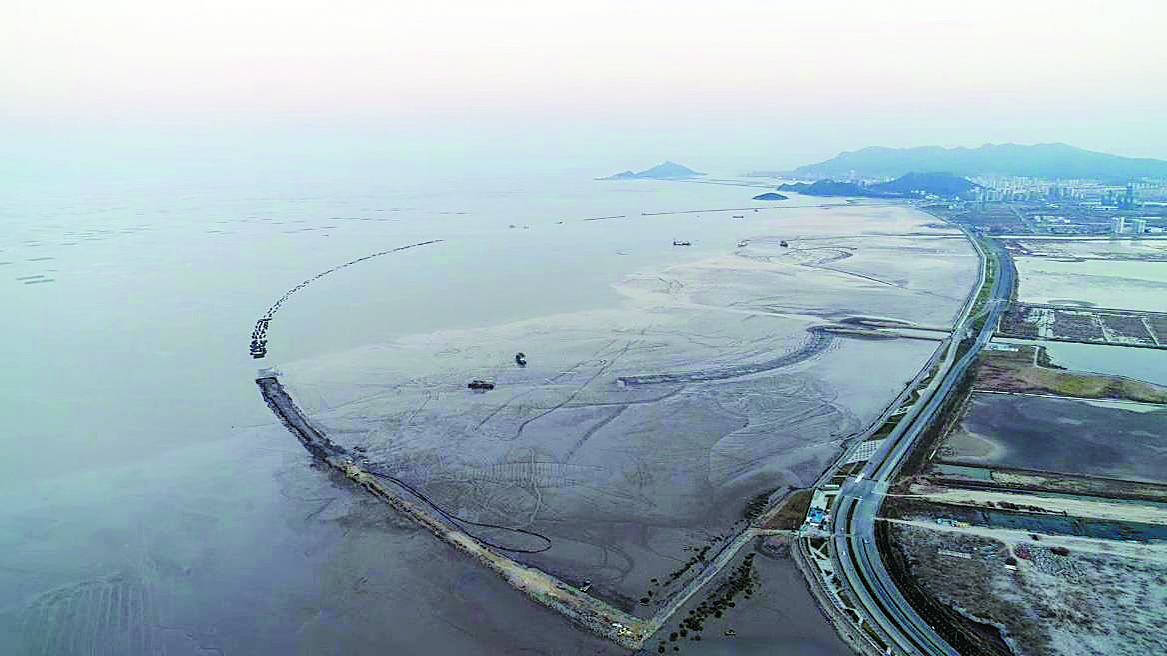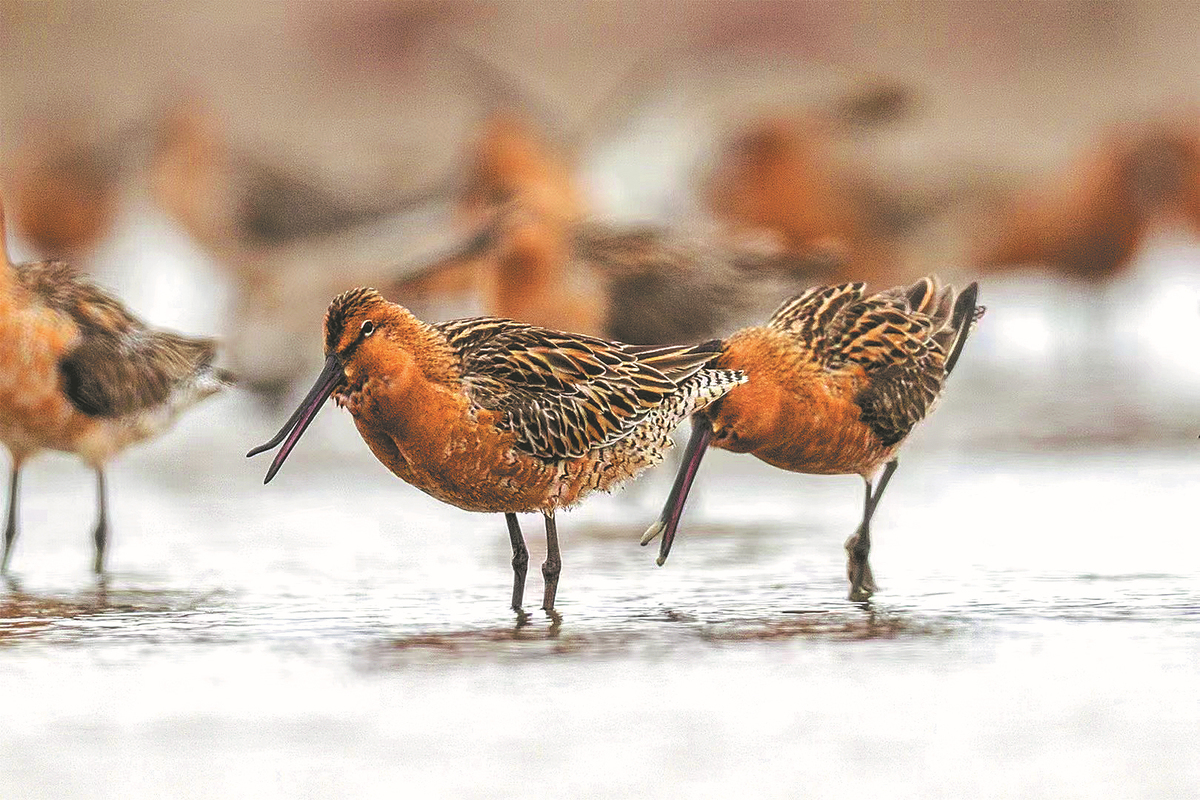Court halts Blue Bay project to protect bird habitats
Environmentalists fear ruling in Jiangsu's coastal Lianyungang may only be a temporary reprieve

Editor's Note: As protection of the planet's flora, fauna and resources becomes increasingly important, China Daily is publishing a series of stories to illustrate the country's commitment to safeguarding the natural world.

A curved artificial embankment partly separates the mouth of the Linhong River from the vast expanse of the Yellow Sea in the coastal city of Lianyungang in Jiangsu province. Within the embankment lies patches of mudflats, a pond of shallow water and a dry shoreline marred by mounds of sand and rocks and overgrown with weeds.
The partly enclosed area, with a footprint equivalent to some 20 Palace Museums in Beijing, was once an intertidal mudflat. In the spring and autumn, it is a vital stopover site for thousands of water birds, particularly waders, as they pause to rest and forage during their migrations.
The site has become the focal point in an ongoing dispute between an environmental group and a developer that has persisted for nearly three years and shows little sign of resolution.
Judicial ruling
The site was approved as the construction area for the Jiangsu Lianyungang Blue Bay Remediation Project, with a budget exceeding 1.8 billion yuan ($250 million). The original plan was to create a waterfront recreation area for residents and tourists, forming a "seaside landscape of blue sea, blue sky and white sand", according to the developer.
However, construction at the site was recently halted by a court order after the Friends of Nature Environment Institute, a Beijing-based grassroots environmental nongovernmental organization, brought the project to court, contending that it was damaging the foraging grounds of migratory birds.
On Jan 4, the Nanjing Intermediate People's Court in Jiangsu ruled that the project poses a real risk of ecological damage and should cease construction until gaining further legal approval. Both the institute in charge of environmental assessment before the approval of the project and the construction company were held jointly responsible.
However, the court also stated that the current evidence does not conclusively prove the project's ecological damage or the risk of ecological destruction from the completed parts of the project.
The ruling marks a pivotal moment in the environmental public interest litigation that has rumbled on for three years so far. Some environmental law scholars said the ruling was a significant advancement in environmental justice, serving as a warning to all environmental assessment institutes, while a few conservationists consider the ruling to be only a small stop-gap to a project that they believe will ultimately gain approval.
Friends of Nature, also not satisfied that the ruling goes far enough, lodged an appeal with the court on Jan 18.
The project developer told Beijing News it also intends to appeal the ruling.

Legal action
Conservationist Li Jing is one of the initiators of the litigation.
The head of Spoon-billed Sandpiper in China, a nonprofit organization dedicated to the conservation of migratory water birds — especially the critically endangered bird that gave it its name — Li is familiar with the area because she and her team members regularly monitor migrating waterbirds along eastern China's coastline.
"The mudflat at the estuary is truly a valuable ecosystem," she said. It serves as foraging and resting grounds for many migratory waterbirds, including at least five species under first-class State protection, such as the Dalmatian pelican and relict gull, seven under second-class State protection and 15 globally threatened or near-threatened species, all coming here to forage during their migration, she added.
Among them is the Asian dowitcher, a medium-large wader with a long straight blunt-tipped dark bill, medium-length legs and long wings, a near-threatened species on the International Union for Conservation of Nature Red List.
Li and her colleagues discovered that the sandpiper has a high dependency on the mudflat. In the spring of 2019 and 2020, over 90 percent of its global population, exceeding 20,000 birds, visited the mudflat to forage."At the peak of migration, we counted more than 100,000 waders at the three estuaries in Lianyungang, including the Linhong Estuary," Li said.
Upon discovering the project signboard, Li was instantly alarmed. "My immediate concern was the extensive overlap between the project area and the bird habitat," she said.
The project reminded her of the Saemangeum reclamation project in South Korea, which resulted in irreversible losses for migratory shore birds."After the project, the population of the great knot (a shorebird species) in that area declined from nearly 90,000 to a little more than 10,000," Li said.
To prevent a similar tragedy, the SSC decided to take action. They collaborated with several conservation organizations, including the Paulson Institute, to report the situation to relevant authorities. At the end of 2019, the project was suspended for a period but resumed shortly after.
In March 2021, the Friends of Nature joined them, requesting the disclosure of environmental assessment documents. The response they received was that the Blue Bay project complied with the approval process and was legal and compliant.



































